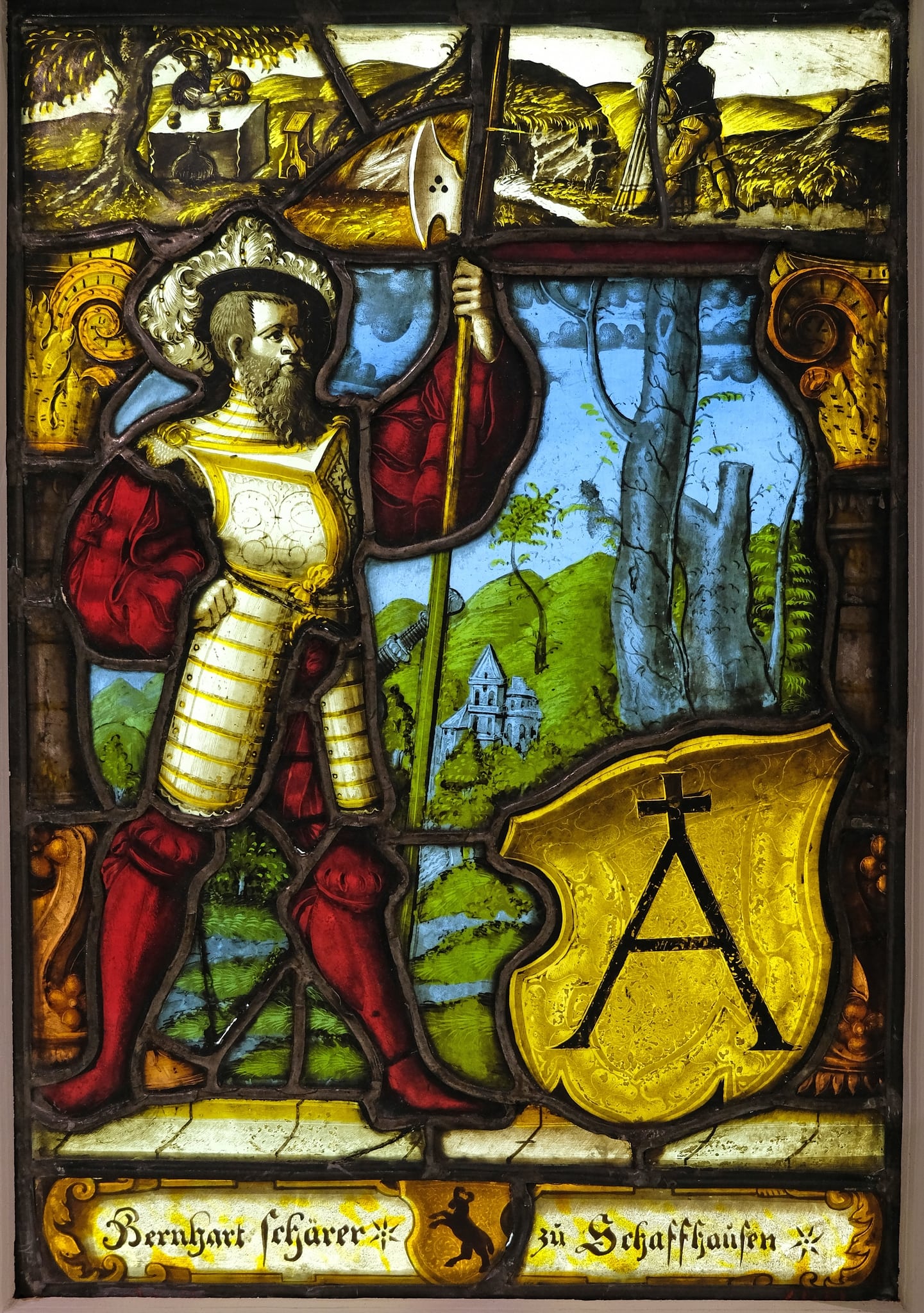A man wearing a breastplate and faulds that extend to his knees holds a halberd and stands on a narrow platform. A yellow shield with a housemark is on the right. He is dressed in red trousers and stockings and wears voluminous red sleeves and a black hat decorated with white feathers. He stands against a wooded landscape with low hills and an edifice with towers. The scene is framed by composite columns with a voluted base, brown shafts and yellow capitals. Above this scene, another landscape shows a man and woman on the left seated at a table embracing while on the right, a man and woman stand and also embrace.
Unidentified arms: Or a letter A sable surmounted by a cross sable.
Bernhart Schärer zu Schaffhausen (replacement. Bernhard Schärer of Schaffhausen)
none
